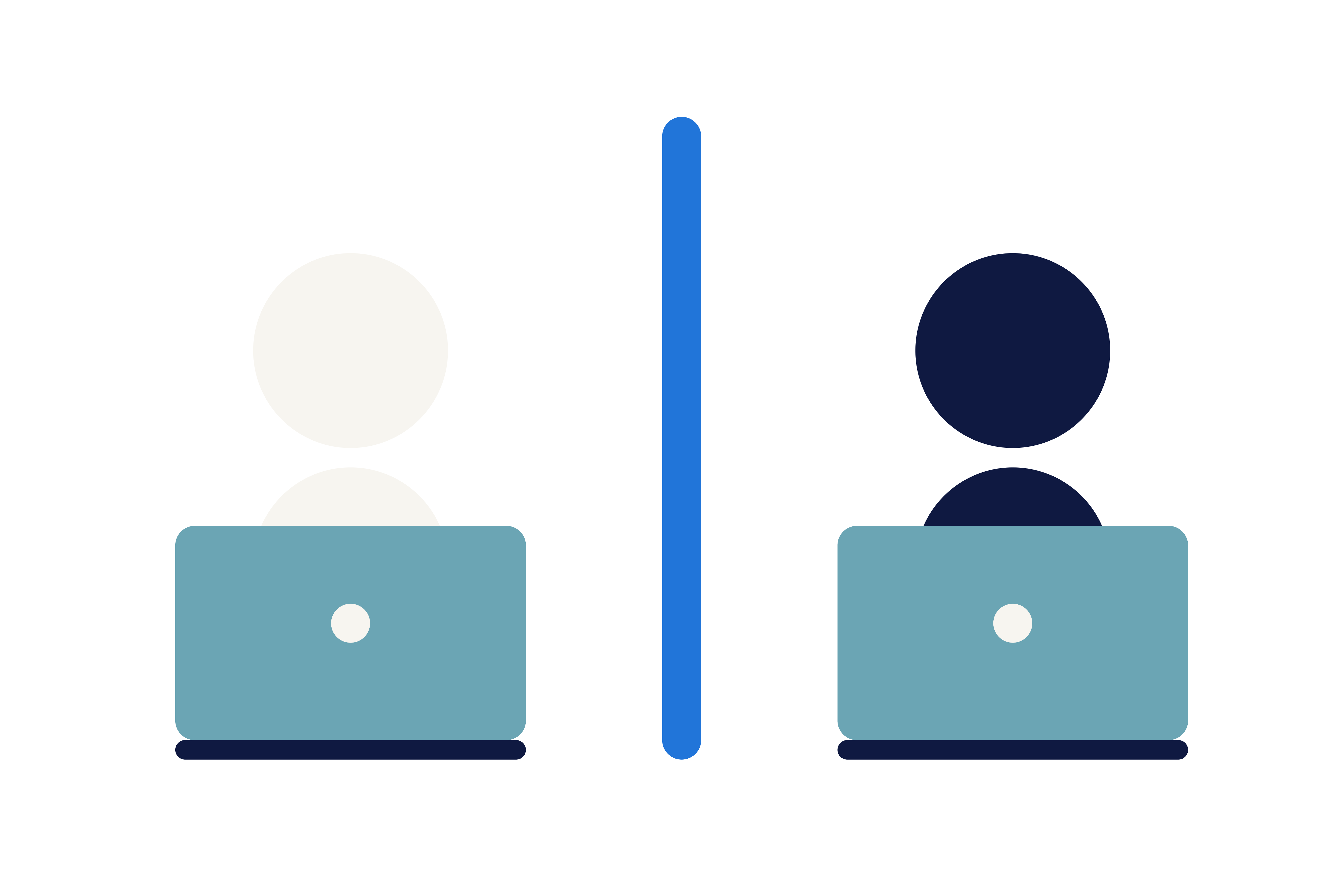Businesses worldwide need to be ready to manage the long-term effects of COVID-19 in 2021 and beyond. For many companies, one of the clearest ramifications of the pandemic - particularly where HR is concerned - has been the expansion of the remote workforce.
The physical distancing requirements introduced to slow the virus spread made it unfeasible for large numbers of people to gather in indoor environments, meaning anyone who could work from home was advised to do so. This fuelled a trend of growth in remote working that was already evident before COVID-19.
There's little doubt that workforces being distributed across various locations will become an increasingly common and familiar concept in the future.

Big companies like Twitter and Slack have said they will give all staff the option to work from home permanently. At the same time, Salesforce is set to introduce a hybrid model that will see most of its employees combining remote and office-based working.
The CRM software giant declared: 'The 9-to-5 workday is dead'.
If the balanced approach being taken by Salesforce is a sign of things to come in the world of work, it's a development that's likely to be welcomed by a large portion of the workforce.
The December 2020 Randstad Workmonitor report identified two work arrangements that had broad appeal for employees during the pandemic:
- a hybrid schedule combining some days in the office and some days at home,
- and flexible hours, enabling an easier balance between work and home life.
More than a third of worldwide respondents (35%) said a hybrid schedule would be their ideal arrangement, while 24% favoured flexible hours.
This could be a positive trend for businesses, too, with opportunities to cut costs by having fewer people in the workplace at any time. There is also evidence to suggest that remote working can improve productivity.
With all these signs suggesting that remote working will play an increasingly vital part in how businesses function in the future, you need to be prepared for what this could mean for your business.
One significant factor to consider is how prepared you manage remote onboarding.
remote onboarding: what is it, and why is it important?
emphasise human interaction
While tech tools have a pivotal role in 21st-century business and HR, mainly where remote onboarding is concerned, it's crucial to remember that technology isn't a replacement for human interaction.
Since remote workers aren't getting the frequent contact and conversation that happens naturally in a physical workplace, you should think about how you might be able to replicate this in a virtual environment.
Miro encourages its employees to mix and get to know each other by breaking the workforce into small groups for intimate bonding sessions. The company even invited workers in its Amsterdam office to play a virtual board game.
Kaelyn Phillips, director of global talent development at Monster, pointed out that the process of introducing a new remote worker to the rest of the team doesn't always have to be focused on work, as Miro's approach shows.
Simply put, remote onboarding is the process of completing your company onboarding procedures with new hires who will be working remotely. It's crucial to remember that someone doing their job from home still needs to go through the various activities involved in inducting a new employee into the business, even if they're not physically on-site and won't be spending much time on your premises.
these activities are likely to include:
- Signing an employment contract and completing other necessary paperwork
- Reading critical information such as company policies, which will consist of your rules and guidelines on remote working
- Meeting their co-workers - from colleagues they will be working with daily to members of other teams and departments.
- Setting up IT equipment and tools, including access to necessary online applications, data and resources.
- Starting more detailed conversations about the role, its responsibilities and expectations
It could be argued that the various processes involved in onboarding become even more important when employees are working remotely since they're not getting all the benefits that would usually come with being based on-site. For example, it could be more challenging for a home-based worker to familiarise themselves with the company, their colleagues and your organisation's general ethos and working atmosphere if they're not physically in the workplace and able to meet people face-to-face.
Onboarding, on the whole, is a critical part of the employer/employee relationship. If it's managed well, the process helps ensure that your journey with a recruit begins on the right foot and that both parties benefit from a positive, productive, lasting association.
From a purely commercial perspective, giving all employees an excellent start to their roles reduces the risk of people leaving shortly after joining, helping you avoid the financial and operational disruption of rapid staff turnover.
Furthermore, people who enjoy a positive onboarding experience are likely to tell others about it and recommend you to their friends and contacts, strengthening your employer brand.
- 20% of new hires leave a job to pursue a different opportunity within 45 days of starting
- Companies with a robust onboarding process improve new hire retention by 82% and productivity by more than 70%
- 69% of employees are more likely to stay with a company for three years if they experienced great onboarding
- The best-performing businesses are 53% more likely than others to start onboarding before the employee's first day - known as pre-boarding
- 72% of workers say one-on-one time with their direct manager is the most critical part of any pre-boarding or onboarding process
- 88% of employees believe their employer mismanaged their onboarding
essential steps to remote onboarding success
Remote onboarding can be a challenge for workers and managers alike. A recruit could find it more difficult to make a positive and confident start to their new job if they spend a lot of time working independently. At the same time, their manager might not be familiar with onboarding an employee in the virtual space.
Considering how important it is to get this aspect of your HR management right, what steps should you take to ensure that remote working growth doesn't come at the cost of effective onboarding?
make a special effort to welcome people
A new employee working remotely could miss out on some of the primary benefits of being in the workplace on their first days, such as meeting their co-workers in person and getting used to the company's general atmosphere and 'vibe'.
Managers can address this by taking extraordinary measures to welcome remote staff and make them feel like they're part of the team. There are various ways to go about this, such as sending out a welcome pack with small gifts and company-branded items, like a piece of clothing, a mug or a water bottle.
One employer that uses this approach is Miro, a virtual whiteboarding software provider. AJ Josephson, the firm's head of people, said it's essential to provide symbols of company culture and show remote workers that the business cares and wants to make them feel welcome.
It would help if you also thought about the best approach to introducing new hires to their co-workers over time. Bringing everyone together for a single video call could be overwhelming for new joiners and impractical, so you might want to come up with a plan for arranging virtual meetings with key colleagues and small teams over a week or two.
This will help remote workers get to know the rest of the workforce in a relaxed, gradual way rather than in a hectic rush.
take advantage of technology
Modern technology is one of the most valuable assets available to any company transitioning from in-person to remote onboarding.
Many tools can help to make this process easier and more efficient. DocuSign, for example, allows you to manage and sign contracts and other vital documents electronically. While instant messaging and project management platforms like Slack are designed to facilitate remote collaboration, helping geographically distributed teams to stay in contact and share data in real-time.
Another critical consideration where technology is concerned is ensuring remote workers have access to all the equipment and tools they need to do their job correctly. That could be anything from delivering a laptop ahead of time so the user can set it up and familiarise themselves before starting to ensuring the employee has full access to any proprietary software or cloud platforms they need.
You also need to give remote staff the proper training and IT support to ensure they can use their tech tools effectively. This is particularly important if they're using applications or software they're not familiar with.

The onboarding process - whether it's happening remotely or in person - should be all about people. It's about making connections and making sure the person feels that they have joined a place that wants them and a place that welcomes them"
use mentoring or a buddy system
Suppose you have several remote workers all starting simultaneously. In that case, you could have a lot to gain from implementing a buddy system that helps employees learn and get to know the business together. As well as supporting learning and development, this approach can create a sense of togetherness and camaraderie that is hugely valuable for people who spend a lot of time working alone.
Another strategy that can prove highly effective is to introduce mentoring. When a new employee joins your organisation, giving them a mentor can help them get to know the company and settle in as quickly as possible, which increases the likelihood that they will fulfil their potential and become a productive member of the workforce.
Mentoring can also be an excellent way to pass on the soft skills and knowledge that more experienced employees have steadily accrued over several years.
These benefits could prove particularly valuable for new staff working remotely who are likely to appreciate the one-to-one engagement and bespoke learning opportunities mentoring provides.
create a dedicated virtual onboarding package
Expecting a traditional approach to onboarding to work just as well with remote workers could prove to be a costly mistake. The HR department must adapt to the unique demands and requirements of remote working by designing a bespoke virtual onboarding package to provide to new hires in advance, so they have time to read and absorb it.
The package should include the essential resources and information new workers need to start their role on the right foot, including a rundown of your company policies, an employee handbook and helpdesk details.
It's also important to include detailed guidance on how remote staff can access vital tools and software and what they should do if they have any technical problems.
follow up
The remote onboarding process doesn't end after a new hire has been with you for two or three weeks. While they may have settled into their role then, they might still have some concerns to raise or questions they haven't had an opportunity to ask.
It's essential to follow up on the earliest onboarding stages and regularly check in with remote workers during their first three months with you. This will help you understand how they're finding the job, how happy they are and whether they need any specific training or support.
Some companies might even choose to spread their onboarding procedures over a whole year, depending on the nature and complexity of the role.
As well as helping recruits make the best possible start to their working life with you, taking a long-term approach can help you gain insights into the effectiveness of your remote onboarding and how it could be improved.
Randstad has created a new guide exploring this subject, which recommends some steps you can take to optimise your virtual onboarding methods and get the best results for all parties.
The guide highlights best practices in critical areas like devising a training plan for your remote workforce and maintaining face-to-face interaction between co-workers.






